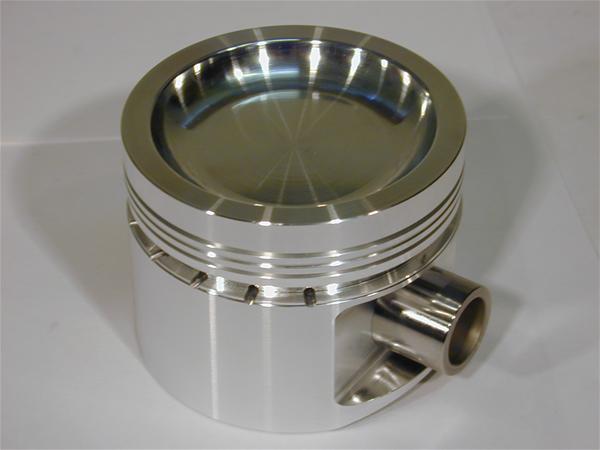| Page: |
| Home > A-Series EFI / Injection > Exhaust Gas Analyser readings | |||||||
|
8604 Posts Member #: 573 Formerly Axel Podland |
2nd Sep, 2008 at 05:35:37pm
Can anyone make anything of the attached output?
Saul Bellow - "A great deal of intelligence can be invested in ignorance when the need for illusion is deep."
|
||||||
 1346 Posts Member #: 2340 Post Whore Dublin Ireland |
2nd Sep, 2008 at 05:49:57pm
Ok Paul My taughts,
Edited by PaulH on 2nd Sep, 2008. On 17th Feb, 2009 Rob H said:
I find the easiest way is to super glue the bolt to the end of one of my fingers. ______________________________________________________ |
||||||
|
8604 Posts Member #: 573 Formerly Axel Podland |
2nd Sep, 2008 at 06:01:19pm
I'm guessing that this was at idle.
Saul Bellow - "A great deal of intelligence can be invested in ignorance when the need for illusion is deep."
|
||||||
 (2)[/url] by [url=https://www.flickr.com/photos/150672766@N03/]Rod Sugden[/url], on Fli) 5988 Posts Member #: 2024 Formally Retired Rural Suffolk |
2nd Sep, 2008 at 06:29:33pm
What year car is it being tested as to get a limit on CO of 0.3 ??? presumably CAT equiped.
Schrödinger's cat - so which one am I ??? |
||||||
|
8604 Posts Member #: 573 Formerly Axel Podland |
2nd Sep, 2008 at 06:50:46pm
No, there's no CAT fitted at the moment. It was registered on the last day of August 1992, so does not need one ???? This is the 998 Turbo engine without the turbo. Remember I knackered the development engine :$
Edited by Paul S on 2nd Sep, 2008. Saul Bellow - "A great deal of intelligence can be invested in ignorance when the need for illusion is deep."
|
||||||
 (2)[/url] by [url=https://www.flickr.com/photos/150672766@N03/]Rod Sugden[/url], on Fli) 5988 Posts Member #: 2024 Formally Retired Rural Suffolk |
2nd Sep, 2008 at 07:05:30pm
Yes, I essentially agree the HC and lambda don't agree.
Schrödinger's cat - so which one am I ??? |
||||||
|
Forum Mod 10980 Posts Member #: 17 ***16*** SouthPark, Colorado |
2nd Sep, 2008 at 07:16:38pm
Interesting results and comments. Sorry I can't add anything more constructive - but PaulH and Rod seem to know their beans here... :) On 17th Nov, 2014 Tom Fenton said:
Sorry to say My Herpes are no better Ready to feel Ancient ??? This is 26 years old as of 2022 https://youtu.be/YQQokcoOzeY |
||||||
|
8604 Posts Member #: 573 Formerly Axel Podland |
2nd Sep, 2008 at 07:41:26pm
Once we get the Siamesed Code working correctly and I am getting stoich on the inner and outer cylinders, I'll get it tested again. Saul Bellow - "A great deal of intelligence can be invested in ignorance when the need for illusion is deep."
|
||||||
 1346 Posts Member #: 2340 Post Whore Dublin Ireland |
2nd Sep, 2008 at 08:38:58pm
Ok Nail on head, It sounds to me like you have a clasic case of over fueling at idel, While you drive the car it fuels with in reason close enuf not to cause a major problam, now let the engine idel for a period of time and it begins to over fuel which in turn cools every thing down which causes the plugs to foul which in turns causes a bad burn which leads to more over fueling and so on till you have a bag of spanners or the engine will just cut out and be very stubbron to start. If your test 'er left the car idle for any perioud this is what I would expect when I test Exhaust gas I always bring the car up to 2000rpm for 30 seconds to clear the plugs and combustion chambers.what it looks like is you have a root problam of slight over fueling at idle I have set my own cars to idel on the lean side which combats this problam.
On 2nd Sep, 2008 Paul S said:
I'm guessing that this was at idle. The engine was very "fluffy" when I picked it up. It took a few stabs of the throttle to clear. I'm guessing that he had it idling for a while whilst it warmed up. I would not be surprised if one of the outer cylinders had started to misfire at the point the readings were taken. Would that explain the readings? On 17th Feb, 2009 Rob H said:
I find the easiest way is to super glue the bolt to the end of one of my fingers. ______________________________________________________ |
||||||
 11046 Posts Member #: 965 Post Whore Preston On The Brook |
2nd Sep, 2008 at 09:00:18pm
CO is partialy burnt fuel, HC is unburnt fuel.
On 26th Oct, 2004 TurboDave16v said:
Is it A-Series only? I think it should be... So when some joey comes on here about how his 16v turbo vauxhall is great compared to ours, he can be given the 'bird'... On 26th Oct, 2004 Tom Fenton said:
Yep I agree with TD........ |
||||||
|
8604 Posts Member #: 573 Formerly Axel Podland |
2nd Sep, 2008 at 10:11:20pm
Thanks Sprocket, that's very useful.
Saul Bellow - "A great deal of intelligence can be invested in ignorance when the need for illusion is deep."
|
||||||
 11046 Posts Member #: 965 Post Whore Preston On The Brook |
2nd Sep, 2008 at 10:24:27pm
Now there is a thought
On 26th Oct, 2004 TurboDave16v said:
Is it A-Series only? I think it should be... So when some joey comes on here about how his 16v turbo vauxhall is great compared to ours, he can be given the 'bird'... On 26th Oct, 2004 Tom Fenton said:
Yep I agree with TD........ |
||||||
 11046 Posts Member #: 965 Post Whore Preston On The Brook |
2nd Sep, 2008 at 10:29:48pm
You may find these useful in the future On 26th Oct, 2004 TurboDave16v said:
Is it A-Series only? I think it should be... So when some joey comes on here about how his 16v turbo vauxhall is great compared to ours, he can be given the 'bird'... On 26th Oct, 2004 Tom Fenton said:
Yep I agree with TD........ |
||||||
|
8604 Posts Member #: 573 Formerly Axel Podland |
3rd Sep, 2008 at 09:14:05am
On 2nd Sep, 2008 Sprocket said:
Now there is a thought Two cylinders lean, giving residual oxygen and the other two cylinders rich, giving the high CO, but doesnt acount for the high HCs 
It is by no means the worst I have seen, and would have passed on a BET. Is the car a Cooper, to justify the 0.3% CO limit? If there was the occasional misfire due to the over rich inner cylinders then this would give high HCs. It's a 1992 Sprite, originally fitted with a 1275 Carb engine. I think due to the lack of an engine number they probably just pick a Cooper spec. It may also be due to the fact that the car is a Cooper look-a-like at the moment. Thanks for the .pdfs. I'm going to take them back to bed for a read. Saul Bellow - "A great deal of intelligence can be invested in ignorance when the need for illusion is deep."
|
||||||
 (2)[/url] by [url=https://www.flickr.com/photos/150672766@N03/]Rod Sugden[/url], on Fli) 5988 Posts Member #: 2024 Formally Retired Rural Suffolk |
3rd Sep, 2008 at 10:06:04am
On 3rd Sep, 2008 Paul S said:
If there was the occasional misfire due to the over rich inner cylinders then this would give high HCs. Yes, if the misfire occured while the test was being run - it only needs to be an occasional misfire but each one puts a slug of unburnt fuel into the ehaust gas stream, it can't burn there as there isn't enough oxygen (the oxygen it mixed with in the cylinder is diluted by the other exhaust gases) so it registers as HC on the probe. I've had it myself, Dolomite Sprint, horrible arrangment of plugs and leads and it would misfire at tickover but be fine under load. Failed the HC test (MOT tester said it would as soon as he heard the misfire) but we got round it by me applying some pressure to the plug leads while he re-ran the test. EDIT- btw, here's the section from the MOT Tester's manual for pre Cat (pre Aug 1st 1992) which caters for excess HC readings at tickover from high overlap cams... "Note: If a vehicle meets the CO requirement at its normal idling speed but fails the HC check, re-check the HC level at a high idle speed of 2000rpm. If the HC reading is 1200 ppm or less, the vehicle will meet both the CO and HC requirements. . the CO requirement must be met with the engine running at its normal (low) idling speed" Edited by Rod S on 3rd Sep, 2008. Schrödinger's cat - so which one am I ??? |
||||||
|
520 Posts Member #: 2093 Post Whore Grenoble, France |
5th Sep, 2008 at 01:02:44am
Hi Paul,
std 998 A+, g295, MD266, RHF4, 109hp @0.8bar/5400rpm |
||||||
|
1060 Posts Member #: 588 Post Whore Delaware, USA |
5th Sep, 2008 at 02:10:20am
Dunno if its any help but when I used to have to get my TR through emissions it always failed on HC >900.
website:- http://www.terryhunt.co.uk
|
||||||
|
8604 Posts Member #: 573 Formerly Axel Podland |
3rd Sep, 2010 at 02:09:41pm
It's MOT time again, so I thought I would update this.
Saul Bellow - "A great deal of intelligence can be invested in ignorance when the need for illusion is deep."
|
||||||
 10021 Posts Member #: 1456 Mongo Barnsley, South Flatcapshire |
3rd Sep, 2010 at 02:17:19pm
I believe the high CO could be because of the lack of CAT. Exes fiesta had a CO reading or about 4% swapped the CAT was around 0.4% after. If something is worth doing, it's worth doing half of. |
||||||
 (2)[/url] by [url=https://www.flickr.com/photos/150672766@N03/]Rod Sugden[/url], on Fli) 5988 Posts Member #: 2024 Formally Retired Rural Suffolk |
3rd Sep, 2010 at 02:31:21pm
Yes, lack of CAT.
Schrödinger's cat - so which one am I ??? |
||||||
|
8604 Posts Member #: 573 Formerly Axel Podland |
3rd Sep, 2010 at 02:57:10pm
Thanks.
Saul Bellow - "A great deal of intelligence can be invested in ignorance when the need for illusion is deep."
|
||||||
 16540 Posts Member #: 4241 King Gaycharger, butt plug dealer, Sheldon Cooper and a BAC but generally a niceish fella if you dont mind a northerner Rotherham, South Yorkshire |
3rd Sep, 2010 at 02:59:28pm
I thought it was a date cut of at the end of 1992?? On 11th Feb, 2015 robert said:
i tried putting soap on it , and heating it to brown , then slathered my new lube on it 
|
||||||
 10021 Posts Member #: 1456 Mongo Barnsley, South Flatcapshire |
3rd Sep, 2010 at 03:00:27pm
Yes you did read it somewhere.
If something is worth doing, it's worth doing half of. |
||||||
|
8604 Posts Member #: 573 Formerly Axel Podland |
3rd Sep, 2010 at 03:04:37pm
I have the X and D :) Saul Bellow - "A great deal of intelligence can be invested in ignorance when the need for illusion is deep."
|
||||||
 10021 Posts Member #: 1456 Mongo Barnsley, South Flatcapshire |
3rd Sep, 2010 at 03:07:36pm
I really should check the vin on my spi shell. It's an early K plate but dunno if I would get away with it. If something is worth doing, it's worth doing half of. |
||||||
| Home > A-Series EFI / Injection > Exhaust Gas Analyser readings | |||||||
|
|||||||
| Page: |


